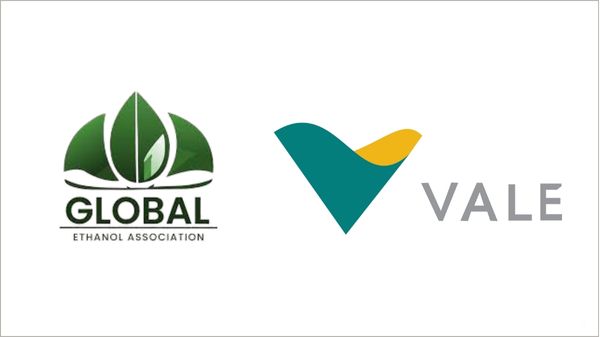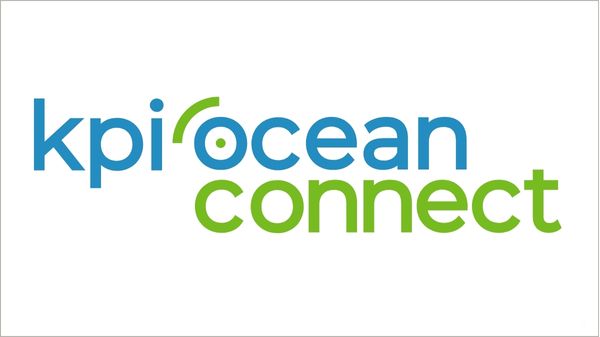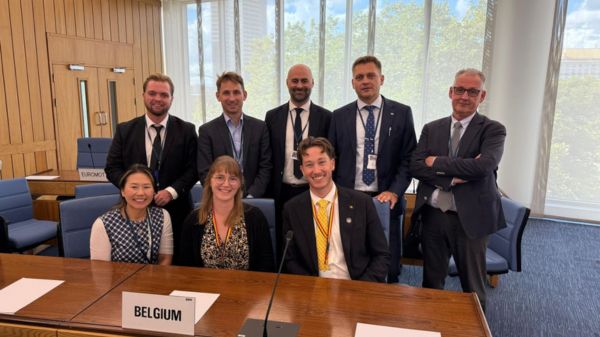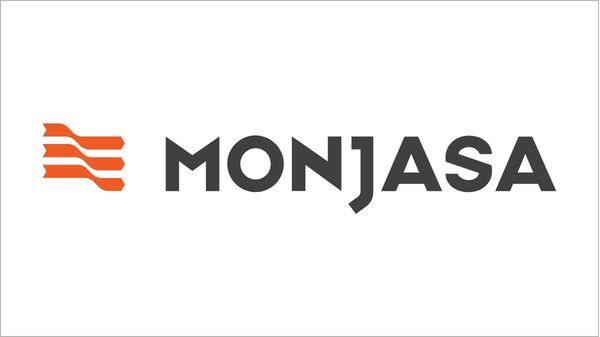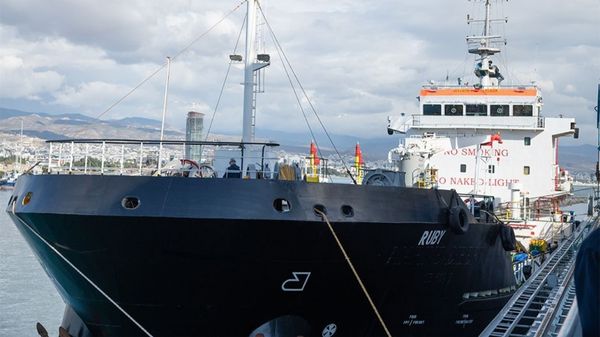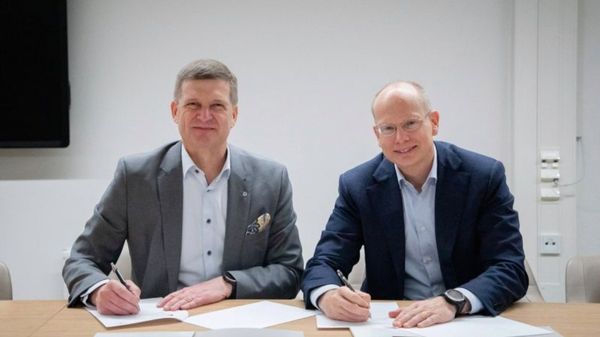The International Transport Forum (ITF) - an inter-governmental organisation within the Organisation for Economic Co-operation and Development (OECD) family - has issued its latest policy brief entitled '
Shipping and climate change: where are we and which way forward?' which analyses the situation of maritime transport in the context of the upcoming UN climate change negotiations, or COP 21.
According to the ITF, which acts as a think tank for transport policy, greenhouse gas emissions of shipping are "considerable" and would need to halve by 2050 in order to attain the goal of keeping global warming within a 2°C pathway. Instead, they are set to rise "substantially", and the industry will have to take additional actions, the ITF says.
The full policy brief has been provided below.
Shipping and climate change: where are we and which way forward?
The greenhouse gas emissions of shipping are considerable. They would need to halve by 2050 for attaining the goal of keeping global warming within a 2°C pathway. Instead, they are set to rise substantially. The industry needs to act.
- Current measures will mitigate ship emissions to some extent, mainly through better energy efficiency of ships.
- Lower speeds, higher utilisation, better ship designs and alternative energy sources can further reduce ship emissions.
- Sectoral and institutional complexities must be overcome to create impact.
- A target for shipping emissions, an action plan for implementation and a carbon tax for shipping, the receipts of which could feed into the Green Climate Fund are needed.
The facts
International shipping contributed to around 0.8 billion tonnes of CO2 emissions globally in 2012. This represented 2.2% of worldwide carbon emissions. Of these, 62% came from three sorts of ships: container ships, bulk carriers and tankers (2012 figures).
Since 1990, shipping emissions have doubled, despite a 10% decrease during the economic downturn between 2007 and 2012. The CO2 emissions from maritime transport in 2050 are projected to be between 50% and 250% higher than current levels, depending on how global trade increases in different scenarios. This would mean that shipping emissions in 2050 could represent up to 14% of the total global emissions. The main explanation for the increase of shipping emissions since 1990 is the increase in maritime trade. The main explanation for the decrease since 2007 is slow steaming.
The 2009 Copenhagen Agreement set out pathways for CO2 emission reductions needed to limit global warming to 1.5°C or 2°C by 2100. These references are used in the national submissions to the UN Framework Convention of Climate Change (UNFCCC) 21st Conference of Parties (COP 21) to be held in Paris (France) in December 2015. If the shipping sector would apply a 2°C pathway, it would have to cut CO2 emissions from its ships to 0.4 billion tonnes by 2050 and achieve zero carbon emissions by 2080.
Shipping emissions are regulated by the International Maritime Organisation (IMO), a special agency of the United Nations. The 1997 Kyoto agreement gave responsibility to take measures in this area to IMO. The main measures taken by the IMO include regulations on ship design which will increase the energy efficiency of ships. These regulations are known under the acronyms EEDI (Energy Efficiency Design Index) and SEEMP (Ship Energy Efficiency Management Plan).
Although these measures certainly will have an effect in moderating the growth of shipping emissions, their full implementation will not be enough to halt the growth of, let alone reduce, shipping emissions in the future.
The mitigation solutions
The main potential measures to mitigate shipping emissions are lower speeds, higher ship utilisation rates, energy-efficient ship designs and use of alternative fuels.
Lower speeds: The combination of ship overcapacity and high fuel prices around 2008 led to widespread implementation of “slow steaming”, i.e. deliberate reduction of ship speeds to save fuel. Slow streaming has been an important factor for reducing ship emissions since 2007. Fuel prices have since come down, but as excess ship capacity has increased consensus in the sector is that slow steaming is here to stay. The emissions reduction achieved could thus be considered as structural. If speed would go up emissions would also exponentially rise. The potential of further emissions reductions through more slow steaming is limited.
Higher ship utilisation: Higher cargo loads per ship reduce emissions, as fewer ships are needed to carry the same amount of goods. Huge overcapacities in container shipping have led to corresponding low utilisation rates of ships that are projected to last until at least 2019. The reduction of overcapacity in shipping would be helped by the scrapping of subsidies for ship yards and shipping companies.
Energy-efficient ship designs: EEDI and SEEMP apply to new-built ships. Considering the long life cycle of ships, the impact of improved designs will only be felt gradually. Even after complete implementation of the IMO regulations, results would fall short of needed emissions reductions. However, the possibility exists to make the design indices for energy efficiency more stringent and align them with leading industry practices.
Alternative energy sources: The large majority of ships run on heavy fuel oils, which cause the greenhouse gas emissions. Annex VI of the International Convention for the Prevention of Pollution from Ships (Marpol) foresees the introduction of a global cap of 0.5% on sulphur content of ship fuel in 2020, which will force most ships to use cleaner fuels or add scrubber systems that remove pollutants from exhaust fumes. However, this will not have any impact on overall CO2 emissions. To reduce these, ships would have to increasingly run on Liquid Natural Gas (LNG), methanol or use other energy sources for their propulsion, such as wind or solar energy.
For the mitigation of greenhouse gas emissions in ports, shore power facilities provide an additional solution. Another development that could reduce emissions from shipping is a long-term decline of maritime trade. Although trade growth has slowed down recently, long-term projections still foresee large increases in maritime trade: the ITF Transport Outlook 2015 foresees maritime trade volumes almost quadrupling by 2050.
The challenges
Fuel accounts for up to half of total ship costs. One would thus expect this to be an incentive for shipping companies to reduce fuel costs. However, this is a split incentive: Many of ships are chartered and their owners in many instances would not see the benefits of their investments, which would flow to the shipping companies. Moreover, the information on the effectiveness of technologies and designs is not easily quantifiable for ship owners, making it difficult for them to gauge the benefits of certain measures they could take.
Reduction of shipping emissions is partly driven by demands of importers, exporters, ports and financiers. Some importers and exporters take green supply chains, including low shipping emissions, into account in their tenders for shipping goods. Some ports have introduced incentives for reducing ship emissions in ports. Some banks take green criteria, including emissions, into account in their ship financing decisions. These initiatives deserve support and wide roll-out. But they will hardly be sufficient to direct maritime transport towards a carbon-neutral pathway.
One of the challenges to advancing global debates on shipping and climate change is the fundamentally different principles of the UNFCCC and the IMO. While the UNFCCC advocates “common but differentiated responsibilities”, the basic principle of the IMO is “no more favourable treatment”. The latter principle (which holds that ships flying the flags of countries that have not yet ratified IMO conventions will still be required to meet the convention’s stipulations) is applied because shipping is a global business with a lot of possibilities of avoiding national regulations by de-flagging ships to flag states with less stringent regulation.
This has happened to a massive extent over the past decades, with the result that the majority of ships are now registered in developing countries. The challenge is thus to find measures that will be applied universally, with some sort of compensation for developing countries, for instance improving local capacity to implement IMO regulations, without subsidising shipping sectors in developing countries.
The main proposals so far
An emission target for the shipping sector was proposed in April 2015 by the Marshall Islands, but not acted upon within the IMO. The proposal aimed at establishing a greenhouse gas emission reduction target for international shipping consistent with global warming below 1.5°C and at agreeing measures necessary to reach that target.
A variety of Market-based Mechanisms (MBM) to reduce shipping emissions was discussed within the IMO in 2010/11, but equally without result. These discussions included a fuel tax, emission trading schemes and a range of further measures. Following the deadlock, discussion within IMO turned to ship design measures, such as EEDI and SEEMP, on which agreement was reached. The International Chamber of Shipping (ICS) has recently expressed its preference for a bunker levy, which the ICS argues would limit administrative burdens for the shipping sector.
The UNFCCC’s 2009 Copenhagen Agreement also proposed a Green Climate Fund. This was supposed to attain a volume of USD 100 billion by 2020, and to be used for financing climate mitigation projects in developing countries. In 2014, shipping was identified at the COP 20 round of climate negotiations in Lima (Peru) as one of the sectors that could contribute to this fund. A USD 25 charge per tonne CO2 to be applied in the shipping sector would raise approximately USD 26 billion, while only very marginally raising maritime transport costs. Only recently, the International Monetary Fund (IMF) on 7 October called for the introduction of carbon taxes.
The European Commission has agreed to introduce obligations for the shipping sector to conduct monitoring, reporting and verification (MRV) per ship on emissions. This scheme was decided in anticipation of a global MRV system, still under discussion at IMO level. MRV could potentially be used as a basis for developing Market-based Mechanisms.
Recommendations: The way forward
The reduction of shipping emissions would gain huge impetus if COP 21 would agree to an ambitious package for the shipping sector. This package could include the following elements:
- An absolute emissions target for shipping, related to reaching a 1.5° C or 2° C pathway. Considering the size of its current and projected emissions, it would be odd if countries are expected to adhere to emission targets but not the shipping sector, especially since it would be impossible to apportion shipping emissions to countries.
- A mandate for the IMO to develop an action plan with concrete measures to reach the emission target. These measures would leverage the approaches outlined above (speed, utilisation, energy efficiency, alternative energy sources). In order to increase the link between the IMO and UNFCCC frameworks, the IMO could be requested to submit this action plan and annual progress reports for scrutiny to the UNFCCC Conference of Parties. Roll-out of MRV requirements might help to increase the transparency of measures and instruments and their impacts on emission reductions.
- A carbon tax for the shipping sector. This approach has the advantage of administrative simplicity. It would be easier to implement than any other Market-based Mechanism. The impact on maritime trade would be marginal if the tax were set at around USD 25 per tonne of CO2. The receipts of such a carbon tax could provide a substantial source of finance for the Green Climate Fund. As such, part of the revenues could be used for compensation of developing nations affected by the carbon tax on shipping.

